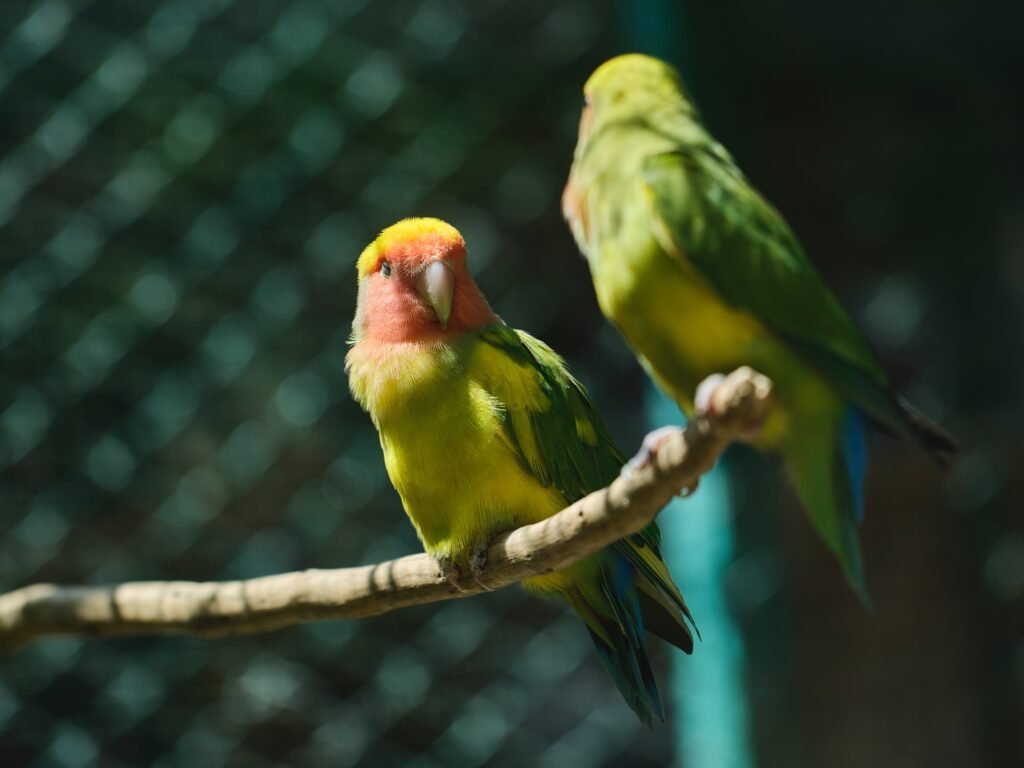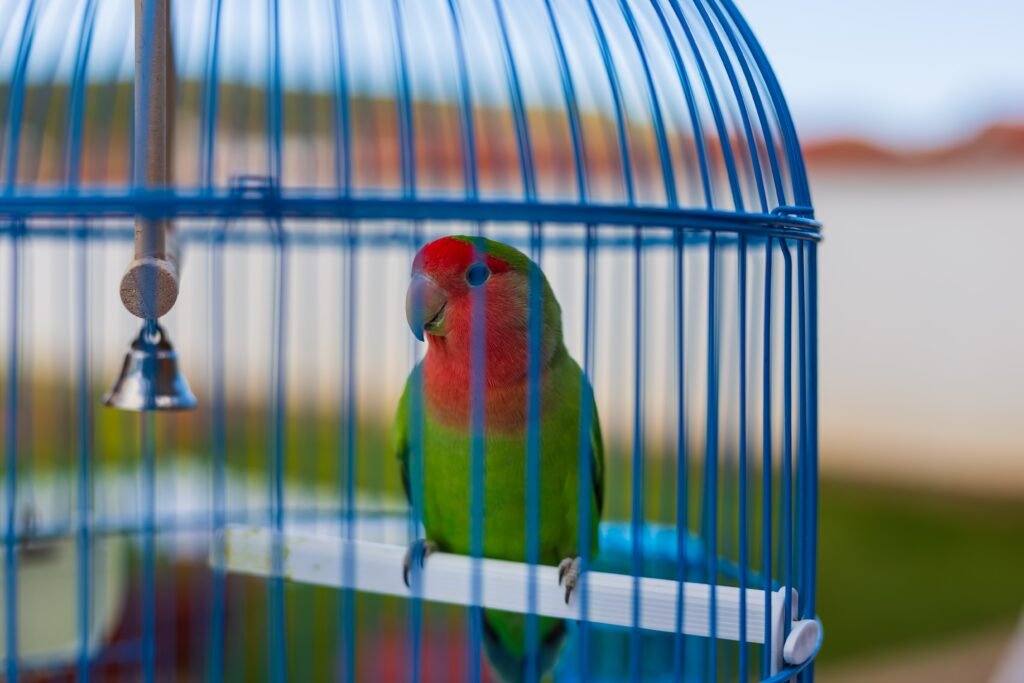
The Nutritional Value of Grapes
Before we delve into whether lovebirds can eat grapes or not, let’s take a look at the nutritional composition of grapes. Grapes are a delicious fruit that comes in various colors, including green, red, and black. They are packed with essential vitamins, minerals, and antioxidants.
Here is a breakdown of the nutrients found in grapes:
- Vitamins: Grapes are rich in vitamins such as vitamin C, vitamin K, and vitamin B6. These vitamins play a crucial role in supporting your lovebird’s immune system, maintaining healthy feathers, and aiding in overall growth and development. Vitamin C, in particular, acts as an antioxidant and helps protect cells from damage.
- Minerals: Grapes contain essential minerals like potassium and manganese. Potassium is important for maintaining a healthy heart and regulating blood pressure in lovebirds. Manganese contributes to bone health and helps in various metabolic processes.
- Antioxidants: Grapes are loaded with antioxidants such as resveratrol and flavonoids. These antioxidants help fight against free radicals, reduce inflammation, and protect your lovebird’s cells from damage. Resveratrol, in particular, has been associated with various health benefits, including cardiovascular health.
- Fiber: Grapes are a good source of dietary fiber. Fiber aids in digestion and helps prevent constipation, which is essential for the overall digestive health of your lovebirds. It also promotes a healthy gut microbiome.
Based on their nutritional composition, grapes can be a healthy addition to your lovebird’s diet. However, there are certain considerations and precautions to keep in mind before introducing grapes to their menu.
Introducing Grapes to Your Lovebird’s Diet
When it comes to feeding grapes to your lovebird, it is crucial to follow some guidelines to ensure their safety and well-being:
- Moderation is key: While grapes are nutritious, they should be given to lovebirds in moderation. Too many grapes can lead to an imbalanced diet, as they are high in natural sugars. It is recommended to offer grapes as an occasional treat rather than a staple part of their diet. A general rule of thumb is to limit the amount of grapes to about 10% of your lovebird’s overall diet.
- Proper serving size: Cut grapes into small, bite-sized pieces to make it easier for your lovebird to consume. Ensure that the grapes are seedless, as seeds can be a choking hazard for your bird. Additionally, removing the skin can make it easier for your lovebird to digest the fruit.
- Wash thoroughly: Before offering grapes to your lovebird, make sure to wash them thoroughly to remove any potential pesticides or residue that may be present on the skin. It is best to opt for organic grapes whenever possible to minimize exposure to harmful chemicals.
- Freshness matters: Always provide your lovebird with fresh grapes. Discard any grapes that are overripe or show signs of spoilage. Fresh grapes not only ensure optimal taste but also reduce the risk of bacterial contamination. Avoid feeding grapes that have been refrigerated for too long, as they may lose some of their nutritional value.
- Observe for allergies: As with any new food introduction, closely monitor your lovebird for any signs of allergic reactions or digestive issues after consuming grapes. Symptoms may include diarrhea, vomiting, or changes in behavior. If any adverse reactions occur, avoid feeding grapes in the future and consult an avian veterinarian for further guidance.
Other Fruits and Vegetables for Lovebirds
While grapes can be a safe and enjoyable treat for your lovebirds, it is essential to provide them with a varied diet to meet their nutritional needs. Here are some other fruits and vegetables that you can incorporate into your lovebird’s diet:
Fruits:
- Apples: Rich in vitamins and fiber, apples can be offered in small slices or grated.
- Berries (strawberries, blueberries, raspberries): These antioxidant-rich fruits can be served whole or mashed for easy consumption.
- Melons (watermelon, cantaloupe): Refreshing and hydrating, melons can be cut into small cubes or slices for your lovebird.
- Oranges: High in vitamin C, oranges can be offered in small segments without seeds.
- Pineapples: A tropical treat, pineapples can be served in small chunks or as juice.
Vegetables:
- Leafy greens (spinach, kale, lettuce): These greens are packed with vitamins and minerals. Offer them in small pieces or mix them with other vegetables.
- Carrots: Crunchy and nutritious, carrots can be grated or cut into small sticks for your lovebird to enjoy.
- Bell peppers: Colorful and rich in vitamin C, bell peppers can be sliced into thin strips for your lovebird to nibble on.
- Cucumbers: Hydrating and low in calories, cucumbers can be sliced or grated for your lovebird’s delight.
- Broccoli: Nutrient-dense and high in fiber, broccoli florets can be steamed or lightly cooked before serving to your lovebird.
Remember to always introduce new foods gradually and in small quantities to allow your lovebirds to adjust to them. Each bird may have individual preferences and tolerances, so it is important to observe their response to different foods. Consulting with an avian veterinarian or an experienced bird breeder can provide you with specific dietary advice tailored to your lovebird’s needs.
Conclusion
In conclusion, lovebirds can indeed eat grapes and enjoy their nutritional benefits. However, it is vital to feed grapes in moderation, cut them into small pieces, and ensure they are fresh and seedless. Always observe your lovebird for any signs of allergies or digestive issues when introducing new foods. Alongside grapes, incorporate a variety of fruits and vegetables into your lovebird’s diet to provide a well-rounded and balanced nutritional intake. By following these guidelines, you can ensure that your feathered friends stay healthy, happy, and nourished.
FAQ
- Can lovebirds eat grapes?Yes, lovebirds can eat grapes. They are packed with essential vitamins, minerals, and antioxidants that contribute to your lovebird’s overall health and well-being.
- How should grapes be served to lovebirds?Grapes should be cut into small, bite-sized pieces to make it easier for your lovebird to consume. It is important to remove the seeds and wash them thoroughly before offering them to your bird.
- Can lovebirds eat grapes as a staple part of their diet?No, grapes should be given to lovebirds in moderation. They are high in natural sugars, so it is recommended to offer grapes as an occasional treat rather than a staple part of their diet. Limit the amount of grapes to about 10% of your lovebird’s overall diet.
- What other fruits and vegetables can be included in a lovebird’s diet?Some other fruits and vegetables that can be included in a lovebird’s diet are apples, berries (strawberries, blueberries, raspberries), melons (watermelon, cantaloupe), oranges, pineapples, leafy greens (spinach, kale, lettuce), carrots, bell peppers, cucumbers, and broccoli. It is important to introduce new foods gradually and observe your lovebird’s response to them.



